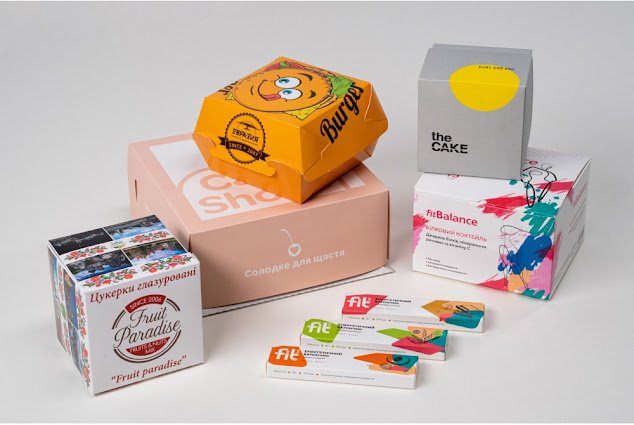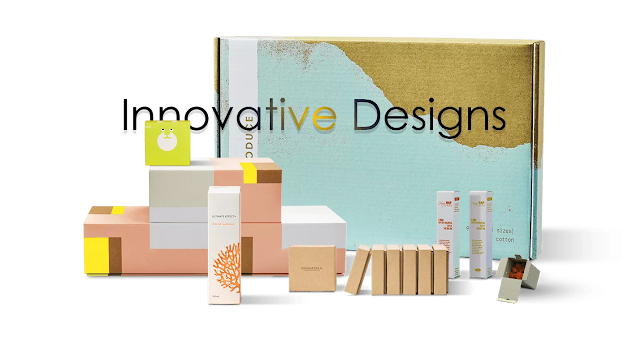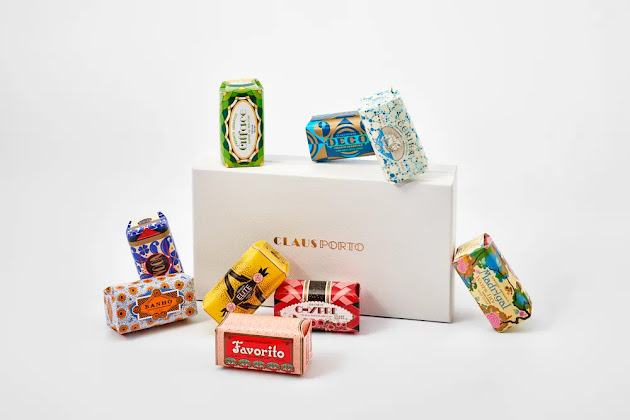Practical Product Packaging Design Tips
Practical Product Packaging Design Tips
It's a great feeling for me, as a designer, to
watch the designs take shape on paper. When it stands at the base of a brand
and is displayed on the shelves, it's fantastic!
Read Story
In the meantime, let me share a short story
(or maybe a longer one) about how it all started!
When I left my job and started working as an
independent entrepreneur, I first created products, printed them, and sold them
to make an assortment. However, as with all business, it failed! Because I was
new to everything! I wasn't old enough to understand how the design world works
and too new to understand
business, everything.
But wait for a second, and there are no tears!
It all came back to me after a cycle full of learning and experiences and
ageing and maturing. Now I am moving in the same direction, specializing in
packaging, merchandise, and printing, however, with much more progress.
Knowledge About the Quality of the Prints
Yes, we returned to Los Angeles. I lived my
life on my own, only with my hopes. My goal was to show my printed paper
products using my drawings. Then I walked around town to create my own
creations. It started by visiting the printing houses, gaining knowledge about
the quality of the prints, knowing what I would like in bulk orders, and so on.
The real adventure began when I realized I was visiting the printing center in
Los Angeles. My exploration trip took me to the city! Ohhh! It was a little
weird but also charming. There were massive factories that produced printed packaging boxes and some mighty printing machines.
My ambitions kept me going. I stayed in these
areas all day, talked to the printers and the workers, and watched how things
were created. I knew about paper and started learning about different printing
methods. I also understood the technical issues, such as what I need to be
aware of as a designer to print efficiently.
All the effort, work, and experience are
helpful now because I sit in my cozy corner and prepare it for packaging design
and other printing patterns.
I'm here! I'm back from my little journey!
The information I provide here is just a
collection of my experiences in the field, and I look forward to helping you
create excellent print materials! Yes, it's not that simple! But did I look for
easy things? We are all about quality, no!
Get ready as you go through the basics to be
aware of when sending your patterns to print, whether to design packaging,
products or anything else in the wild.
Prints are expensive items and do not come
with Cancel buttons. We don't want them to ruin our creative fantasies.
This is the list!
Proof-Read Your Design
Imagine that you have done a fantastic and
elegant job with your packaging design, which is a problem! Grammatical
mistakes spoil the appeal! Huh! Who is that fan of theirs? I will add this to
the list because I made this mistake! The prints were released, and when I saw
them, they had an extra "t" added to the word! I was devastated that
my ears were covered with shame! Should I pay for extra prints? Pf! It wasn't
the best day. However, they printed a small amount, and we could use it as tiny
samples.
It's not the most enjoyable way to be an
artist! Therefore, reviewing printed items before they reach the final printing
location is always great! Mainly if you work with a client who may not be able
to take more than a few sample prints or if no staff or person is assigned to
correct the prints! I'd say it's our job as designers
to take care of that. We must not release our hands from
responsibility!
CMYK Color Mode
Seriously!!! Do we need to know the basics of
this? Packaging templates and any print file must be created in CMYK mode.
I understand! It's so obvious. Ignore the
power of mistakes. Finally, we are all here!
I'm a little annoyed when I start designing
models to realize that. It's a nightmare! Ugh! It is, without a doubt, an
unpleasant feeling! Although it may seem obvious, don't be shy about checking
that everything is in order. It is best to check before you press the submit
button to receive the print files to the printer.
Bleed, Perforation and Cut-Outs
I was utterly ignorant of these words when I
started printing. But in the past, installing these systems was almost routine!
An additional/extended design on all sides is
required to cut the print. This is called bleeding. This is necessary because
although the cut is taking place precisely where it was intended, there may be
a small change.
It is widespread. Even with the most advanced
equipment, this happens. It's like cutting something with cutters; the blade
size takes up only a tiny area of the paper. We could see the blank paper
along these edges if there was no bleeding.
In the end, we don't want our models to look
unprofessional with a black border, do we? And in general, the printing
industry suggests a minimum of 3 mm border on all sides for packaging and all
other models.
A lowercase solid line is drawn to indicate
the cutting area to the printer, while a dashed line means that the paper must
be folded from here. Interpretations may vary from printer to printer, and it
is best to confirm. However, all the printers I've come across recognize these
markings.
It is also our responsibility as designers to
decide on any prints that need to be perforated or otherwise, depending on the
design of the packaging style.
It won't be as overwhelming once you get into
it and will become a daily routine.
Material
I think the quality of the prints depends on
the high quality of the paper. I always prefer printing on white paper, not
light gray or yellow. I think it gives better color results. It is also
essential to know GSM, which is the thickness of the paper. This knowledge can
be beneficial, and sharing your ideas with printers and customers is always
good.
For example, can you imagine the designs you
want to create on glossy paper or a matte sheet? Does coverage ensure print
integrity? I would not leave these decisions to the printer. I would also have
an open discussion about this because it will affect the quality of the
packaging, and therefore I would care about it.
Fonts
Also, as designers at the design school or
self-taught, we know the rules! However, here's what I learned at work.
Customers generally seek to ensure that the most critical aspects of their
brand and business are apparent.
We all have luxury font libraries and access
to Adobe fonts, luxury licenses, luxury fonts, and more. So
cool! But the printers around us may not have them all! We certainly would not
like to think that we will have a shock. I created the models with unique
fonts. And when the prints appear, the default font is Arial or Comic Sans,
just because the printer system detected the error that there are no fonts and
then decided to update automatically based on its design skills.
Example
Suppose the packaging includes a warning about
the product, for example, the importance of a patch test. It may be considered
useless, and place the notice in a small font in a particular place. Maybe this
is crucial for the customer according to the branding rules or the needs of the
business. Therefore, you must plan your product so that the required
information is embedded and easy to read as needed.
After burning my fingers lately, I make sure
that customers are asked before the event to provide me with all the details
that might be needed, and then I make sure that I set it to the correct size to
ensure the quality of the text. Don't get lost in the mix. It's also important
to remember the item's name needs to be printed in a neat font to be clear to
customers because they are on display in stores.
Finally, balancing the practical and artistic
visual aesthetics is necessary, and it can help you make the most of the
packaging design!
Make Sure Everything is Perfect
If your files are set to be created in Adobe
Illustrator and have multiple images, you must include them before printing. If
not done, it will display an image unrelated to printing. Plus, speaking of
experience, I didn't mistake printing a paper early in my career, and the
fantastic texture I added to my design is gone. All the roughness I was hoping
for is gone, and the prints have turned out clean.
It's always a good idea to ensure nothing is
missing from your gorgeous packaging and other design elements!
Use Ai Instead of PS
It was an accident for me! I was a design
partner at a few events, and as it turned out, the print size was necessary for
specific occasions. These included billboards and stage backgrounds, and much
more. After a while, it became a real challenge to take care of Photoshop
files! Large files would be slow and crash, and transfer processes weren't the
easiest.
Anyway. A lot was happening. When a day came,
I had an urgent need, and I realized how much time was being spent simply
because handling files is so tricky. Then I tested everything by transferring
the file to Illustrator, and the size decreased for me. However, specific
effects need to be adjusted if you can use Illustrator to create large files.
It makes my job much simpler and more enjoyable.
Be Aware of File Uploading and Relaxation
Suppose your documents have been uploaded to
Google Drive, and you work for a client in a different time zone. Your designs
have been accepted. You conveniently shared the whole file and ended the day
relaxing in your comfortable clothes and falling asleep as a child.
I guess you know what! Your day is over, and
your new client's day has begun! He tries to print the documents but is
presented with an error message Files cannot be opened because access is
restricted, and there you sleep, you think about how great you did, and, on the
other hand, your client screams to get in touch with you quickly and ends up
with a mess.
Oh! You got the idea, didn't you? Make sure
you do your homework until the last minute! Don't hide it. Couldn't you put it
aside? Allow the right people to access your packaging templates, luxury
documents, and other printable files.
Printing Test
While almost every customer does this, some
choose to overlook this. The above issues are covered when a mistake has been
made, as long as we have a printing example.
However, this is not the same as a solution to
all problems.
I would still make sure that all of the above
is taken. Because even if the tests are printed, what happens if you are
inaccessible to them. As a designer, you may be the only one who can tell if
it's right or wrong; however, what if it's out of your reach for a reason. You
may not be located.
I would certainly not take this at random and
ensure all of the above are addressed to ensure that your packaging design is
designed with a smile when printed and in daylight.
There are complaints to be made about oh! It
is not enough to make it look beautiful, but to ensure that it fulfills its
essential purpose, beautiful!
How Should I Design Product Packaging?
My answer is specific; you do your job as a designer. Know the importance of the brand, make every effort, and use all your design skills. However, it does not overlook the significance of all practical aspects! It sounds so dull! I'm a technical mess!




Comments
Post a Comment